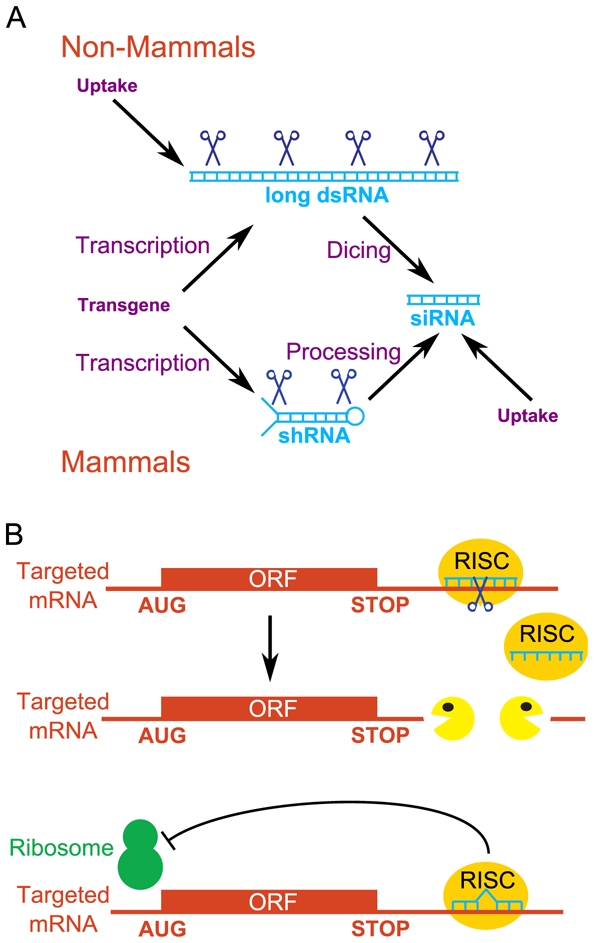Figure 5. RNA interference.

A, Origin of siRNAs (small interfering RNAs). siRNAs are small double-stranded RNA molecules and are the triggers of RNAi. In cultured mammalian cells, they are directly transfected. In mammals in vivo (or in mammalian cultured cells whenever a stable expression of the siRNA is required), they are produced in cells by the maturation of a precursor (shRNA, short hairpin RNA) that is transcribed from a transgene. In non-mammalian species, siRNAs arise from long double-stranded RNAs (dsRNAs) by dicing. These dsRNAs are directly introduced into the cells (C. elegans, cultured Drosophila cells) or transcribed from a transgene (Drosophila in vivo). B, Mechanisms of action of siRNAs. One strand of the initially double-stranded siRNA associates with RISC (RNA-induced silencing complex), and the RISC-RNA complex scans cellular mRNAs. In general, mRNAs with a perfect complementarity to the RNAi are rapidly degraded endonucleolytically then exonucleolytically (upper panel) whereas mRNAs with a partial complementarity are translationnally repressed (lower panel). In either case, siRNAs repress gene expression.
